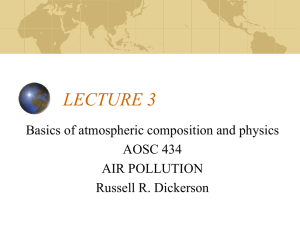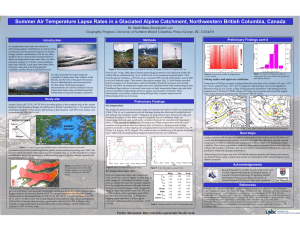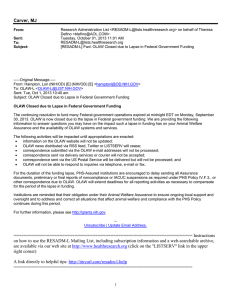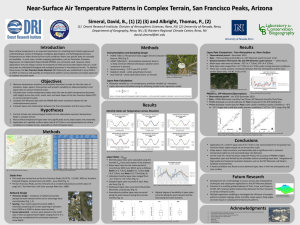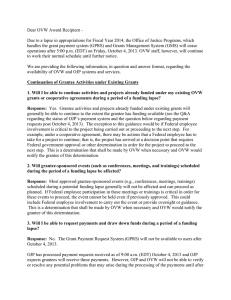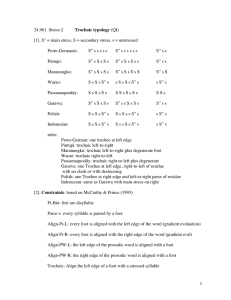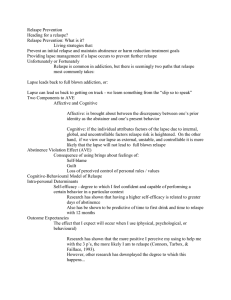Math 171 — Calculus I Spring 2016 Name: 1
advertisement
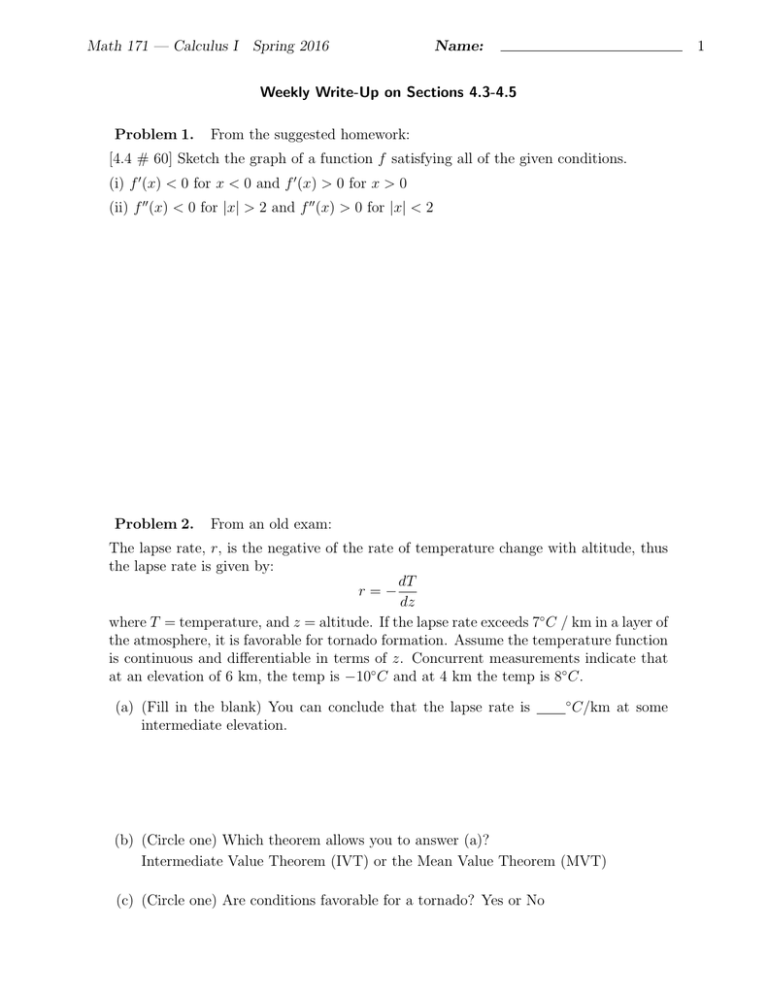
Math 171 — Calculus I Spring 2016 Name: 1 Weekly Write-Up on Sections 4.3-4.5 Problem 1. From the suggested homework: [4.4 # 60] Sketch the graph of a function f satisfying all of the given conditions. (i) f 0 (x) < 0 for x < 0 and f 0 (x) > 0 for x > 0 (ii) f 00 (x) < 0 for |x| > 2 and f 00 (x) > 0 for |x| < 2 Problem 2. From an old exam: The lapse rate, r, is the negative of the rate of temperature change with altitude, thus the lapse rate is given by: dT r=− dz where T = temperature, and z = altitude. If the lapse rate exceeds 7◦ C / km in a layer of the atmosphere, it is favorable for tornado formation. Assume the temperature function is continuous and differentiable in terms of z. Concurrent measurements indicate that at an elevation of 6 km, the temp is −10◦ C and at 4 km the temp is 8◦ C. (a) (Fill in the blank) You can conclude that the lapse rate is intermediate elevation. ◦ C/km at some (b) (Circle one) Which theorem allows you to answer (a)? Intermediate Value Theorem (IVT) or the Mean Value Theorem (MVT) (c) (Circle one) Are conditions favorable for a tornado? Yes or No 2 Problem 3. For in-class discussion: A weight of mass m is attached to a spring suspended from a support. The weight is set in motion by moving the support up and down according to the formula h = A cos(ωt), where A and ω are positive constants and t is time. If frictional forces are negligible, then the displacement s of the weight from its initial position at time t is given by s= where ω0 = p Aω 2 (cos(ωt) − cos(ω0 t)), ω02 − ω 2 k/m for some constant k and with ω 6= ω0 . Use L’Hopital’s Rule to determine lim s. ω→ω0




